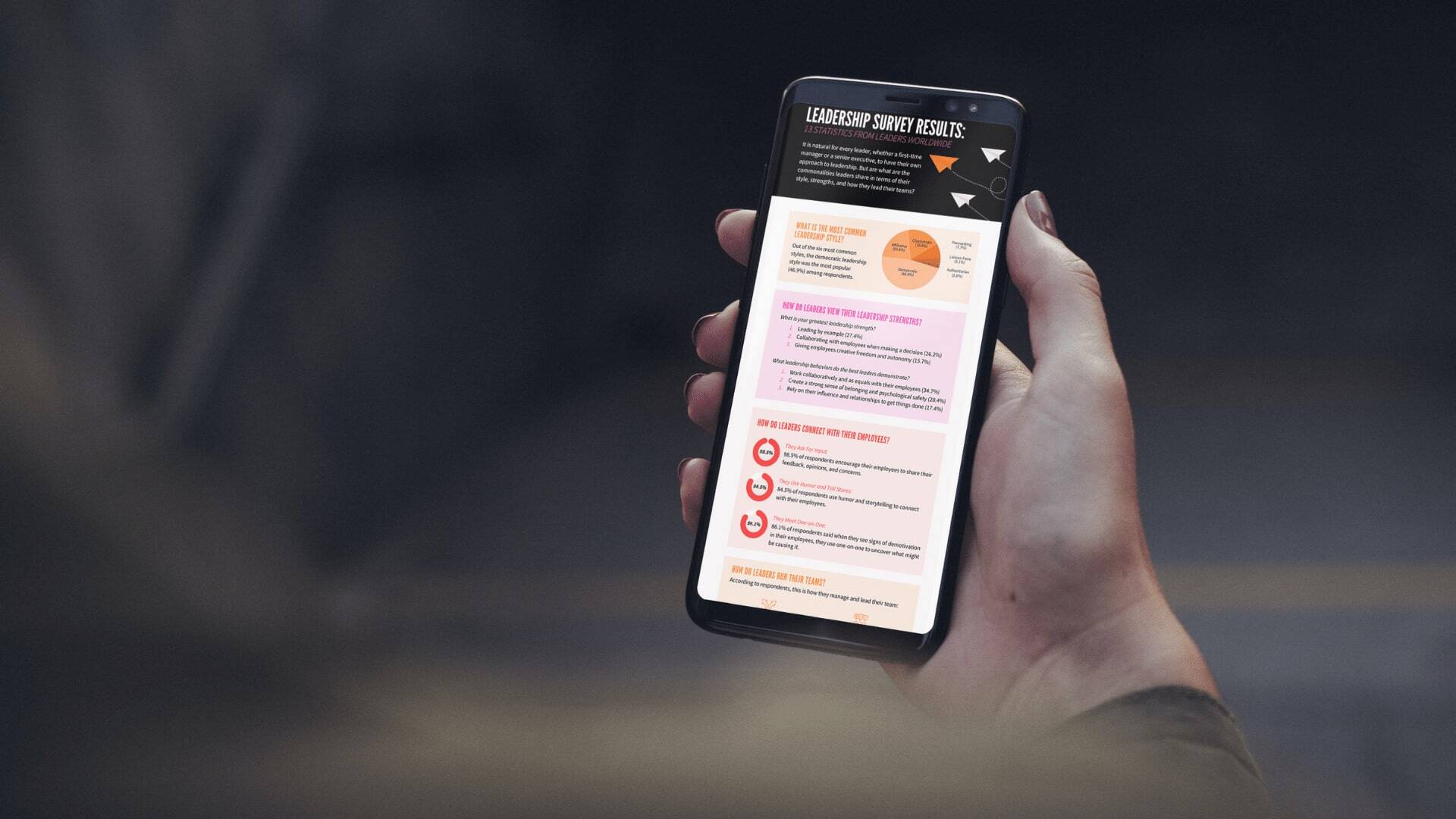4 min read
22 Leadership Brand Examples (+ Worksheet)
Your leadership brand is not defined by your title or the position you hold. It’s how people talk about you and your leadership. It’s your...
3 min read
 Michelle Bennett
:
Jan 11, 2024 5:00:00 AM
Michelle Bennett
:
Jan 11, 2024 5:00:00 AM

Whether intentionally crafted or not, every leader has a brand. We can all reflect on different leaders and, for better or worse, the brands they portrayed, like the visionary, hot head, or coach. Your leadership brand is how people talk about you when you leave the room, and that’s far too important to leave up to chance.
That’s why crafting a distinct identity as a leader is not a mere exercise in self-promotion; it’s about understanding yourself, who you are as a leader, and how you want to be known. It’s about cultivating authenticity, consistency, and trust in those around you.
In this article, we will explore the four steps in determining your leadership brand and provide you with a personal leadership brand template you can use to craft your own. However, if you’re still skeptical that creating a leadership brand is a good use of time, the following benefits may just change your mind.
Crafting a well-defined personal leadership brand is beneficial for leaders as it:
.png?width=650&height=408&name=What%20are%20the%20benefits%20of%20a%20leadership%20brand%20(1).png)
Creating your personal leadership brand is a thoughtful and reflective process. It starts with identifying what you stand for and the principles that guide your actions. You’ll reflect on your strengths and the unique leadership qualities you bring to the job. You’ll evaluate how others perceive you today and use all of these insights to create a compelling narrative that authentically communicates the leader you want to be.
To help you get started, use this editable personal leadership brand template. Record your thoughts and insights from each step to create a compelling leadership brand statement that serves as a compass for your leadership.
.png?width=650&height=366&name=How%20to%20Write%20a%20Leadership%20Brand%20Statement%20in%204%20Steps%20-%20Niagara%20Institute%20(1).png)
The first step in curating your leadership brand is to identify your core values and the principles that guide your decisions, interactions, behaviors, and actions. In addition to evaluating who you are, you will also look at your strengths, leadership skills, and the value you bring to your team and organization.
After you’ve reflected on who you are as a leader, the next step is to evaluate how others see you as a leader. Often, there can be a mismatch between how we perceive ourselves and how others see us. That’s why, during this step, you may want to incorporate the results of any assessments you’ve recently taken or seek out feedback from peers, direct reports, and your leader to gain insight into how others perceive your leadership.
It’s now time to envision the leader you want to be known as. Reflecting on the insights gleaned in the first two steps, you’ll begin to formulate the words and feelings you want associated with your leadership brand.
The last step is synthesizing the information in steps one to three to create a clear and compelling brand statement that communicates your authentic leadership self. Take the words and ideas you’ve generated from step three to create a short leadership brand statement. You will want your statement to align with the leader you want to be and the impact you’ll make. If you’re stuck, these leadership brand examples are a great source of inspiration.

4 min read
Your leadership brand is not defined by your title or the position you hold. It’s how people talk about you and your leadership. It’s your...

5 min read
What kind of leader are you? You're not alone if you do not have a clear, concise, and thoughtful answer to this question. While many leaders have...

5 min read
In 2022, Niagara Institute published the Leadership Styles Quiz to uncover how those in management roles approach leadership. The quiz was completed...